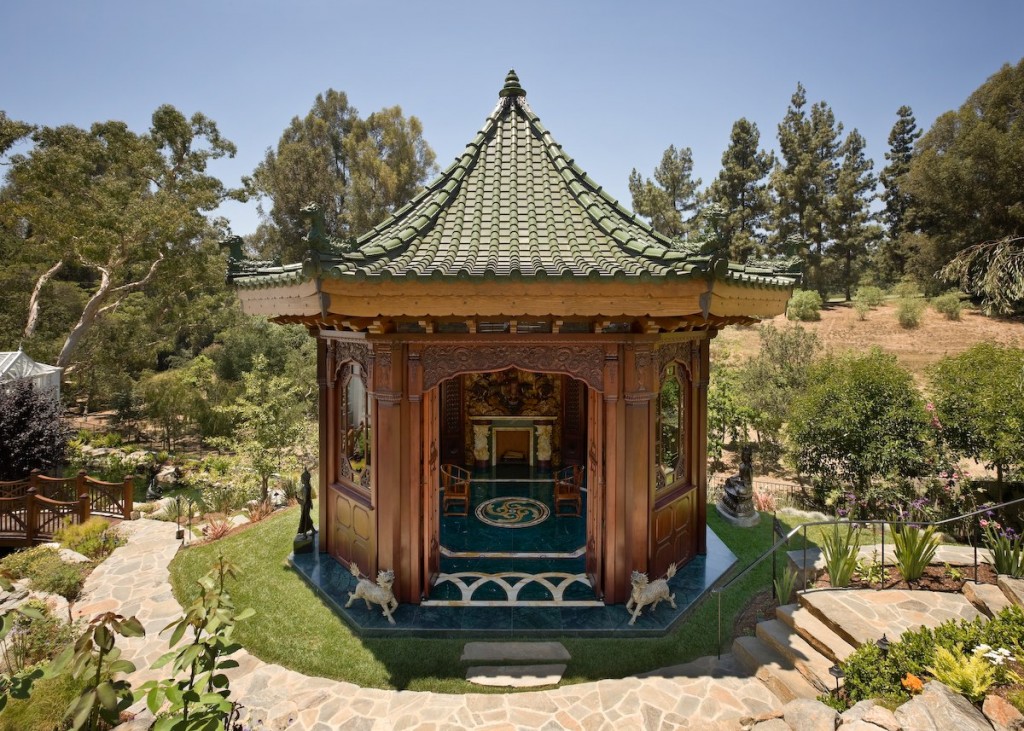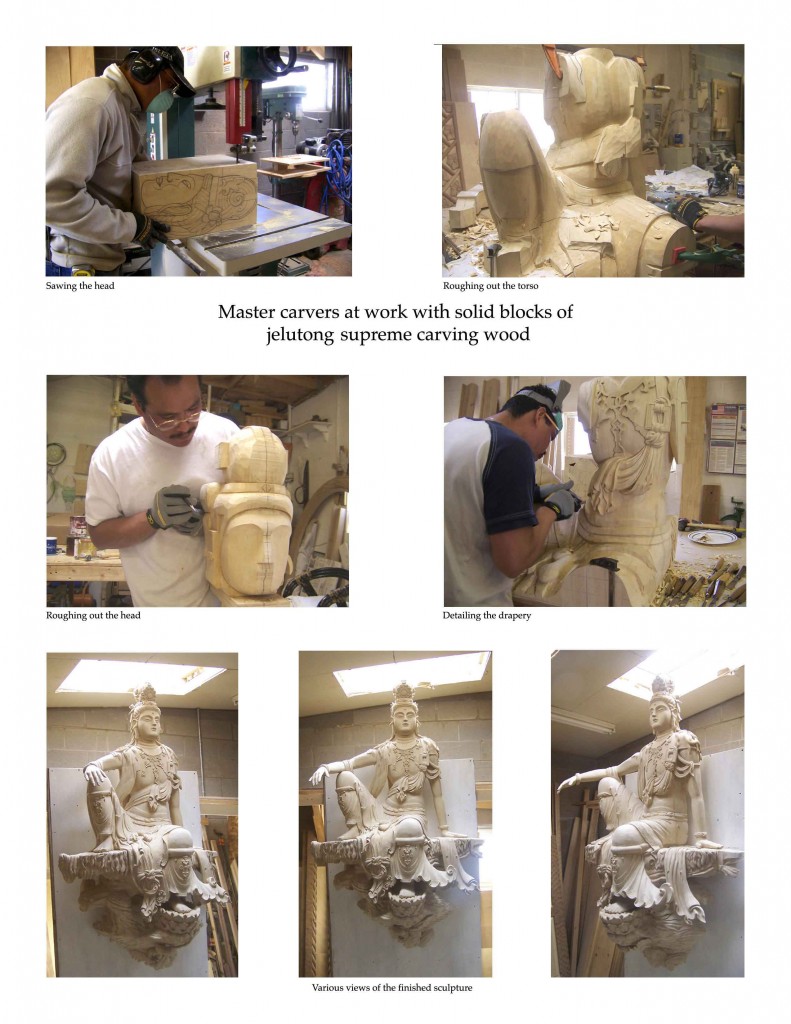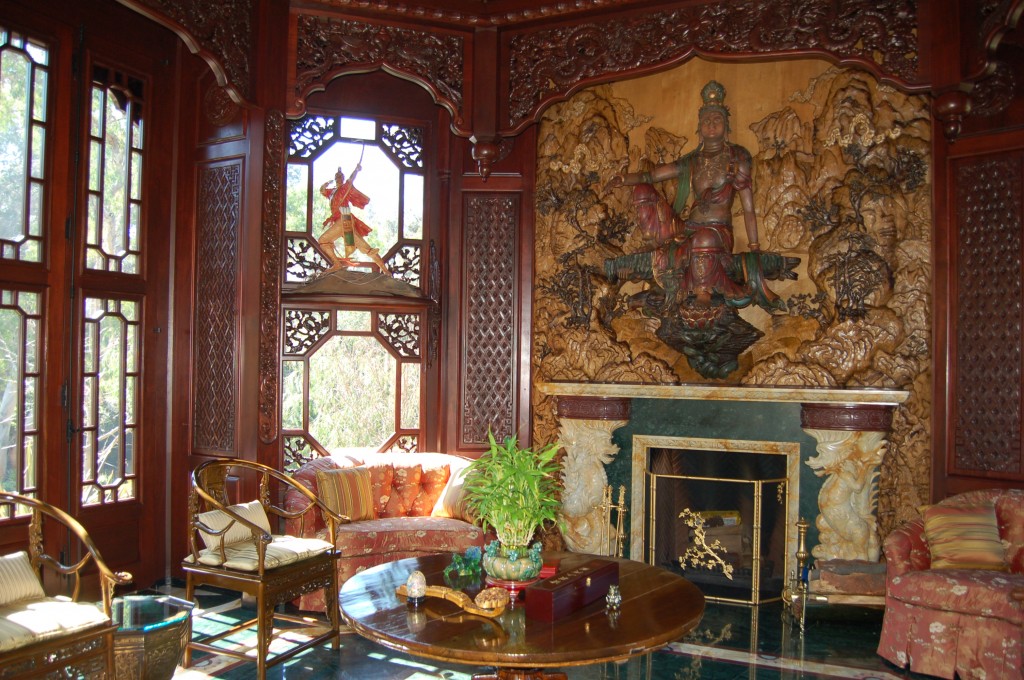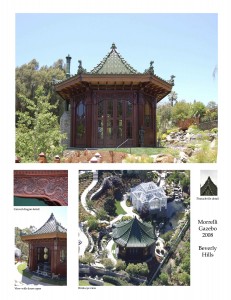Anything is possible when you have the worlds finest team of craft people. Masters of the arts of wood carving, carpentry and joinery, masters of marble sculpture and inlay, and masters of ceramics Sculpture and glazing all collaborated with me on this one.  A gazebo as a focal point in a magnificent garden
A gazebo as a focal point in a magnificent garden
overlooking the golf course of the Los Angeles country club. It is a stopping point on a walkway by a cascading steam, overlooking a pond.
This is a little quote about Gazebos from Wikipedea.
The gazebo is very common in landscape architecture. Gazebos include pagodas, pavilions, kiosks, alhambras, belvederes, follies, pergolas and rotundas. Such structures are popular in warm and sunny climates. They are in the literature of China, Persia and many other classical civilizations, going back to several millennia. The word origin is unknown and has no cognates in other European languages. False etymologies are proposed, such as the French Que c’est beau (“How beautiful”) and the Macaronic Latin gazebo (“I shall gaze”). L.L. Bacon proposed a derivation from Casbah a Muslim quarter around the citadel in Algiers. W. Sayers proposed Hispano-Arabic qushaybah, in a poem by Cordoban poet Ibn Quzman (d. 1160).
All great landscapes must have vistas and destinations for repose. All great landscape must have special features that entice with beauty and intrigue and cause the visitor to wander around and appreciate the plants and the tress on the way, and then have places to sit and enjoy the view.
The Gazebo serves just that function. It could be a mini Tudor cottage with attached roof, It could be a thai pagoda or a sunken grotto with rococo caves. Gazebo, some say its the shakespearean word for the Videbo. The latin word for the the thing to gaze at. These are the places that are designed to take the person out of the tomfooleries of life and into a state of playful fulfillment of the senses. These are garden temples for enjoyment only. Some are follies, all of them are an art form of architecture.
Inside we would duplicated the fantastic Guanyin figure that is the center piece of the Nelson Atkins museum in Kansas City. The carvers went there to study that masterpiece from the Song Dynasty, and then using the most even grain of woods called Jelutong, they carved this piece in full 3 dimensional format over a period of several months. As a background to the figure, we produced a sculpted landscape mural.


